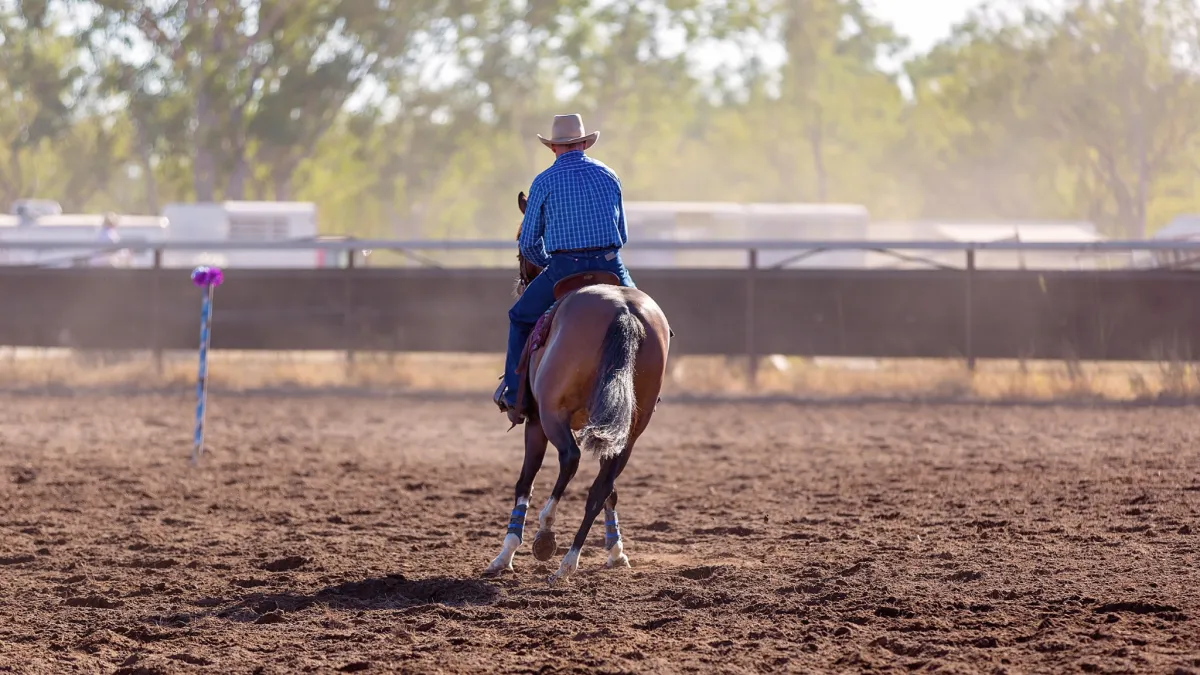
What is a Bridle Horse?
What is a Bridle Horse?
In the cowhorse industry, whether that be the NRCHA (National Reined Cowhorse Association) show horse world or the world of working cowhorses on working cattle ranches, we refer to the finished horse as a "Bridle Horse." This is because only our finished horses who have gone through about four years of training will be shown or primarily ridden in a bridle bit. The bridle bit is a solid bit and can be anything from a spade or ring bit, to a Mona Lisa, San Joaquin, or even a curb bit, or a grazing bit as they are sometimes called.
For my own purposes, a finished bridle horse is distinguished by the following five traits:
1. The Bridle Horse is Ridden with a Bridle Bit
This is the first and most obvious requirement. However, just throwing a bridle bit into a horse's mouth, proclaiming him a "Bridle Horse" when he doesn't pitch a fit, and riding him down the trail is not what I am talking about. The bridle horse knows how to carry the bit on his own, even holding onto the bit with his mouth. (Especially with a spade bit, which is why we go through a hackamore and two-rein process to get into the bridle.) The bridle horse is also soft and supple in his mouth as well as in his entire body, so that he will give to the bit without hesitation at any speed.
2. The Bridle Horse can Rein
The Bridle Horse can perform all the reined maneuvers (sometimes called "dry work") well. This includes lead departures, transitions from slow to fast and back to slow lope without breaking gait, changing leads, sliding into his stops, correct spins at a decent speed, and having a good back-up. In addition to these things, he should be able to stop straight, draw straight, and turn completely around with a "cowhorse turn" and move out again in the correct lead.
3. The Bridle Horse is of General Use Around the Ranch
The Bridle Horse, for my purposes, is not only a show horse, but he can also go out on the circle at a long trot for several miles at a time. He is handy at brandings and gatherings. He is patient and easy to handle when it comes to opening and closing gates without dismounting. He is not a nuisance on long trail rides and will cross bridges, rivers, and ravines without hesitation and can handle steep mountainsides and rocky terrain. He is a pleasure for the farrier to handle (if farriers can feel pleasure) and he is easy to load and unload from a horse trailer. And, though I would not consider it to be a requirement for a bridle horse, I do also like to teach my horses to handle mounted shooting.
4. The Bridle Horse is a Good Ranch Cutting Horse
The Bridle Horse may not be one you would show in the NCHA or NRHA National Cutting Horse Association and National Reining Horse Association respectively), but he can sure enough hold his own at a cowhorse or ranch cutting event, as well as in a sorting pen. He can also turn the cow down the fence and circle him in both directions. The Bridle Horse enjoys dominating a cow, and doesn't have to be reminded of what he is there to accomplish- he loves working a cow in much the same way as a border collie does.
5. The Bridle Horse Can Work a Rope
Finally, the Bridle Horse is good in roping situations, especially with regards to steer stopping and ranch roping, and he can work a rope for a lone cowboy who is doctoring.
In summary, the Bridle Horse is a true partner and can be trusted to take care of you in any situation at a ranch, rodeo, horse show, or mountain trail.
If you would like to learn more about making and understanding the Bridle Horse, I hope you will join my Free Private Facebook Group, "Cowhorse Community".
www.cowhorsecommunity.com
www.risingkranchtrailrides.com

Contact US
klaybullet77@gmail.com
(435)-590-8428

